By: Xavier Romero-Frías
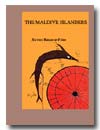 Xavier
Romero-Frías, born in Barcelona in
1954, is an independent scholar. He lived in the Maldives
between 1979 and 1991 studying the oral tradition
and other folk expressions. He has worked for the
Ministry of Education of the Maldive Government dealing
with the publication of schoolbooks, and for UNDP
in a project for the promotion of the local handicraft
industry. He is the author of a 300-page illustrated
ethnography on the Maldives, The Maldive Islanders,
A Study of the Popular Culture of an Ancient Ocean
Kingdom. Presently he resides with his family
in the city of Trivandrum, South India. Xavier
Romero-Frías, born in Barcelona in
1954, is an independent scholar. He lived in the Maldives
between 1979 and 1991 studying the oral tradition
and other folk expressions. He has worked for the
Ministry of Education of the Maldive Government dealing
with the publication of schoolbooks, and for UNDP
in a project for the promotion of the local handicraft
industry. He is the author of a 300-page illustrated
ethnography on the Maldives, The Maldive Islanders,
A Study of the Popular Culture of an Ancient Ocean
Kingdom. Presently he resides with his family
in the city of Trivandrum, South India.
Romero-Frías is married to Aishath Naazneen
of Gaìge
house in Malé, Maldives. She is a Divehi language
broadcaster whose voice is heard in the Maldives,
Minicoy, India and Sri Lanka.
|
| Font: To
read the Standard Indic transcription correctly in this
document, please right click here
and select Save Target As... and browse
to your Fonts folder to download and install TROM2DR.TTF
(file size: 46 kB). If you find some words unfamiliar
they will more than likely become familiar following
the correct installation of this font |
Ancient Flags
Before the beginning of the 1900's a real national flag
of the Maldives didn't exist. The colour of the royal house
was red since very old times, a colour that was selected
as the ensign because of its visibility when contrasted
with the blue backdrop of the sea. Thus the royal flags
were plain red.
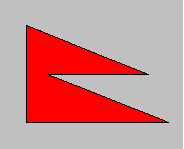 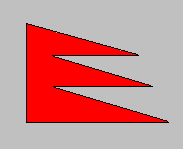 Ancient Royal Flags
Ancient Royal Flags
|
The king of Maldives (the Radun) had a two-pointed personal
flag which was completely red, while the queen had
a three-pointed red flag. The queen's flag was specifically
that of the queen consort (rani kambalun) as opposed to
a queen in her own right (rehendi). Often these flags had
fringes made of small triangular pieces of cloth in red
(but also alternate black and white in the latter versions
with 'danödöimati').
The Origin of the ’Danödöimati’
According to the eminent historian Mr. Tanödöiraiymaage
Shafeegu, one day the king of Maldives (neither the date
nor the king are known with exactitude, perhaps some time
in the early nineteenth century) saw his red royal flag
flying from a white mast that had been decorated with a
black ribbon wrapped around the mast at a descending angle
(danödöiemôburi), so that it had diagonal
lines of black and white colour. The king liked the effect
of the little diagonal black and white lines at the hoist
of the flag and decreed that that they would be incorporated
into the royal flags in a permanent way. Thus a vertical
band of cloth made of small black and white parallelograms
(danödöimati) was added to the hoist of all Maldivian
flags since that date.
Royal Flags
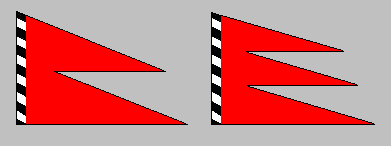
Royal Flags with danödöimati
|
The flags of the king and the queen of Maldives were rather
personal royal standards. These and other flags helped the
Commodore or MÄírubahuru (lit. ‘commander of
the sea’) to determine the most important passenger in a
ship approaching Male harbour. Those who were given special
welcomes were permitted to fly a distinctive flag on ships
on which they were passengers. On ceremonial days these
same flags were also flown on special masts inside the palace
compound.
In the 1930’s when a new standard was designed for the
king, there was no provision of a new flag for the queen
and her old flag fell into disuse.
The red flag with one point was a protocol flag reserved
for important persons invited by the king. Sometimes these
were nobles that were invested by the king with some degree
of representation, or significant foreign visitors. This
flag, as well as the flags above, used to have a fringe
of alternate black and white triangular pieces of cloth.
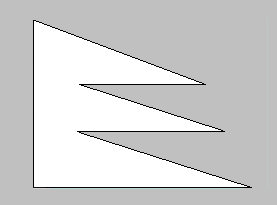
Amaìn
Dida
|
In certain royal processions in Male a notable preceding
the king carried a ceremonial three-pointed flag which was
all white (Amaìn Dida), by which the king was communicating
to his subjects that his intentions were peaceful. The Amaìn
Dida was carried by an official whose designation was jadibu.
This flag was completely white and had no danödöimati,
but it used to have a fringe of small white triangular pieces
of cloth.
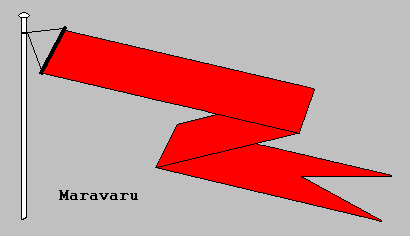 |
Formerly in MaleØ there were two tall masts on the
fort (Kotötöe). From one of those masts a very
long streamer in the royal red colour was flown. This mast
stood on top of the Aa-kotötöe inside the Eterekoilu
(king’s residence), and the large flag flown on it was called
Maravaru. Note how it was attached to the mast. Its latter
variant included the black and white ‘dandöiømati’
band close to the hoist. The fortifications around MaleØ,
which gave a picturesque air to the island, were destroyed
during the 1960’s and 1970’s. Flying of the Maravaru was
discontinued much earlier, but the date in which this large
red streamer was flown for the last time is not known.
The other mast was on top of the Bodöu Kotötöe
Buruzu just outside the Eterekoilu and at the waterfront
along the town wall (Bodöu Faru). This mast had a cross
beam from which flags flew. If there was a foreign ship
in port the main mast of the Bodöu Kotötöe
Buruzu always flew the red ensign (later green ensign).
Whenever a ship arrived in port, a smaller ensign would
be raised on one of the lines of the cross beam. This would
be lowered when the MÄírubahuru (Commodore of
MaleØ harbour.) or his staff had boarded the ship.
Occasionally a second ship would arrive before this and
another ensign would be raised on the other end of the cross
beam until the MÄírubahuru has boarded the second
ship.
The MÄírubahuru ceremonies continued until
the mid 1970s. When a British warship arrived in port, the
Maldive royal standard would be raised on the main mast
of the Bodöu Kotötöe Buruzu until the warship
had finished firing a 21 gun salute to the king. Then the
royal standard would be lowered and the Maldive ensign raised
before a 21 gun salute is fired from Kileìge Buruzu
(next to the aa-Kotötöe Buruzu) to honour the
King/ Queen of England.
The Amaraìli was a long pennant in the Maldive royal
colour It could be flown on the same hoist as other flags,
usually at the top of the masts of the royal 'naakolhu'
(brigs or schooners).
This plain red pennant never had the black-and-white ‘danödöimati’
feature close to its hoist, even in its latest version.
The National Flag
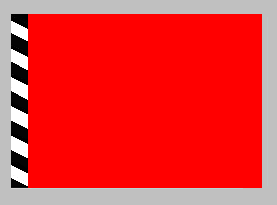
First National Flag of Maldives
|
Towards the year 1903, when the Maldivian rulers
decided that a national flag was needed, a rectangular flag
with the red colour of the Maldivian royal house and the black-white
'danödöimati' at the hoist was designed and approved.
This became the first National Flag of the Maldives.
The National flag was often flown with the Amaraìli
on top. This was done mainly on festive occasions because
the king liked this particular combination of flags. When
the royal ships were decorated for some celebration it was
flown in this way on the mast tops (feìskali).

Flag of the Sayyidu
Beìkalun
|
Among the flags flown in Maldives at the time, not only
the Maldivian National flag was plain. The black flag of
the Sayyidu Beìkalun was inspired by Prophet Mohamed's
flag. This black flag is known by the name of Al-Uqaabu
in the Arabic language. The Sayyidu Beìkalun were
believed to be descendants of Mohamed. Even the Commodore
of MaleØ harbour (MÄírubahuru) could
not afford to offend these people, so they were allowed
to fly a flag in order to warn the authorities ashore when
they were aboard any vessel.
The new National Flag
Towards the 1920s, some individuals among the Maldive authorities
who had seen the flags of Turkey (with its crescent) and
the Hijaz (with the green colour of its central band) thought
that the Maldive flag looked a bit empty. They tried
including a small white crescent (pointing outwards or inwards)
or an empty green rectangle, but none of these projects
(or rather experiments) prospered and they were not given
any official sanction because they failed to please the
king or the prime minister, so the national flag of the
Maldives remained the red flag with the 'danödöimati'.
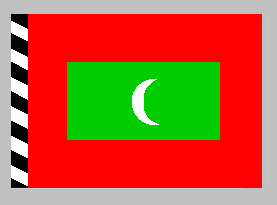
National Flag
|
More years passed and finally King Muhammad Shamsuddin
III declared that the official flag of the Maldives would
be the red flag with the 'danödöimati' and a green
rectangle with a small white crescent moon pointing outwards.
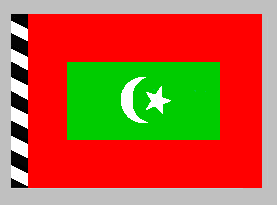
Royal Standard
|
To the personal flag of the king a white star was added
and the queen ceased to have her own flag. After Muhammad
Amin was ousted from power, the danödöimati was
removed from this flag.
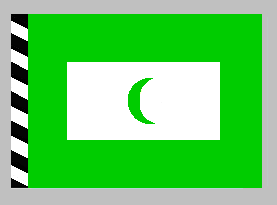 Green Ensign (Harbour Master’s Flag)
Green Ensign (Harbour Master’s Flag)
|
Even after adopting a new design for the national flag,
the plain red original national flag was kept as the red
ensign. It was not phased out completely until much later
(the date is not sure) and continued be used until the 1940s
when the ensign became a green flag with a white rectangle
and a green crescent in the middle. The ensign was used
by the Commodore of MaleØ harbour (see under ‘Maravaru’
for details).
Some time in the 1940s or 1950s the ancient Amaraìli
pennant was charged in the middle with a long green triangle
and a small white crescent, following the pattern of the
new Maldive flag.
Naval Standard of the King (1950’s). This was a double
flag flown on the royal ships whenever the king was aboard.
Note the latter variant of the Amaraìli on top.The
royal Naval flag below the Amaraìli was never flown
on its own, but exclusively in this particular arrangement.
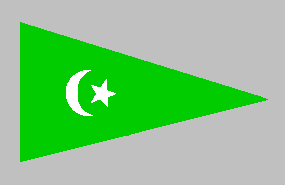
Flag of the Kileìge Nobles
|
The Kileìge Nobles were the peers of the realm.
They were the most important nobles after the king and those
princes who had been given a parasol ceremony (haiykolöu
negun). This pennant was flown on the ships when they were
aboard to inform the Commodore at Male harbour.
Part
2>>

